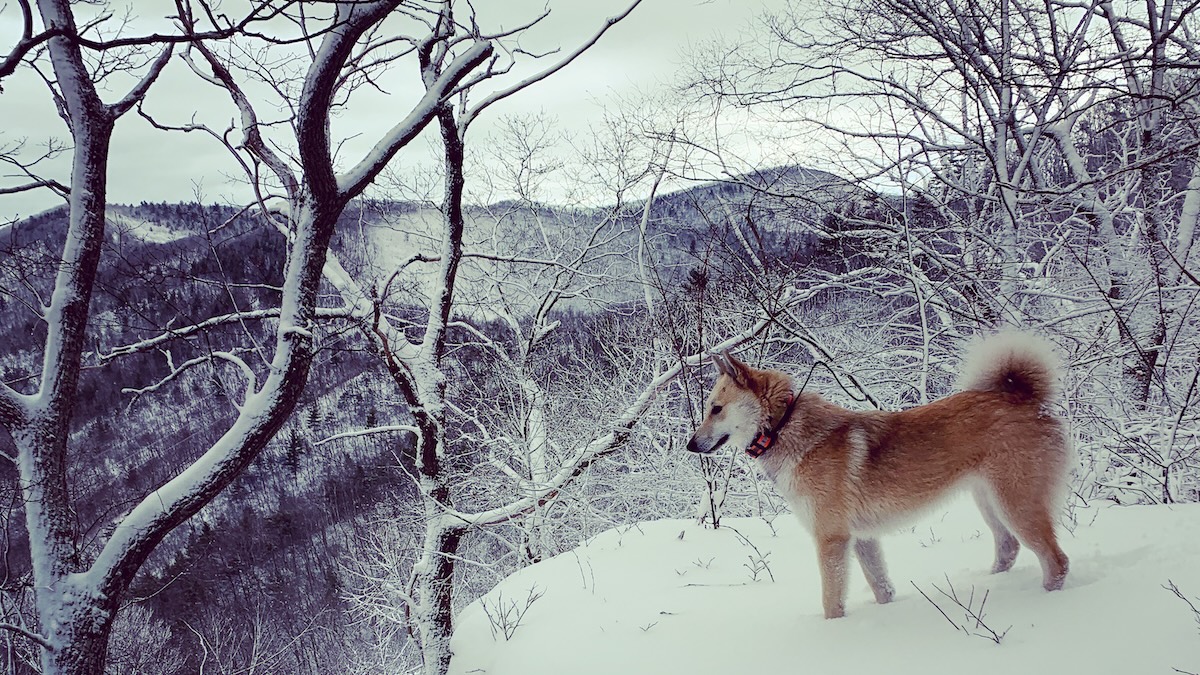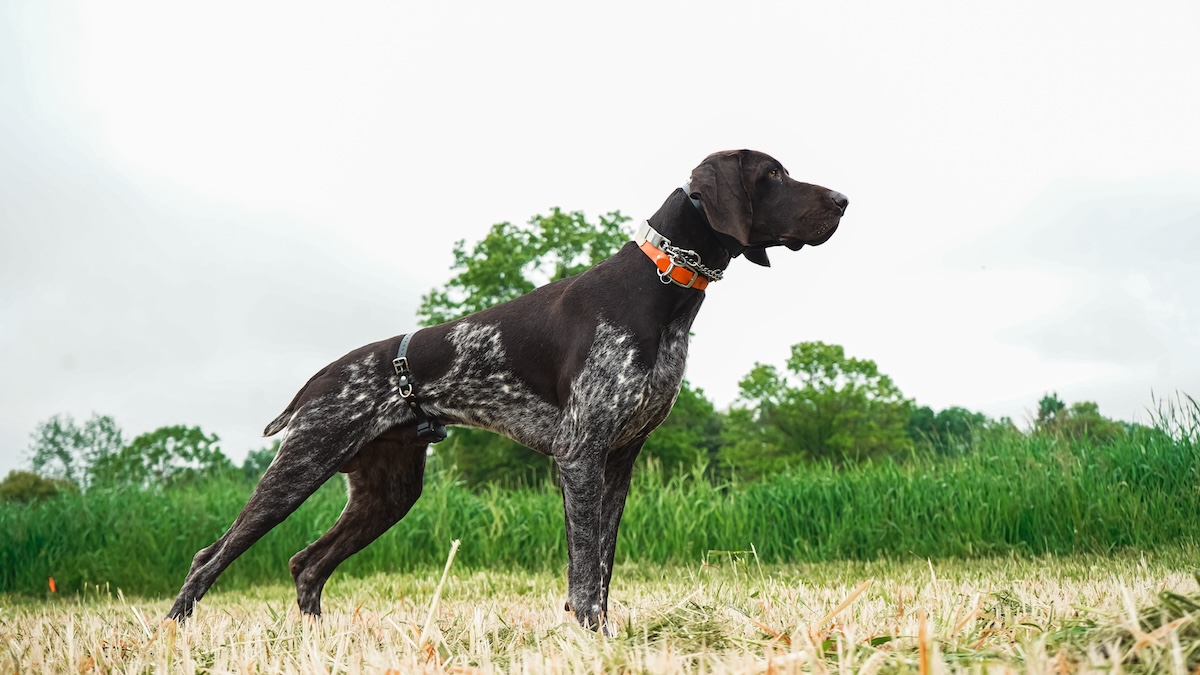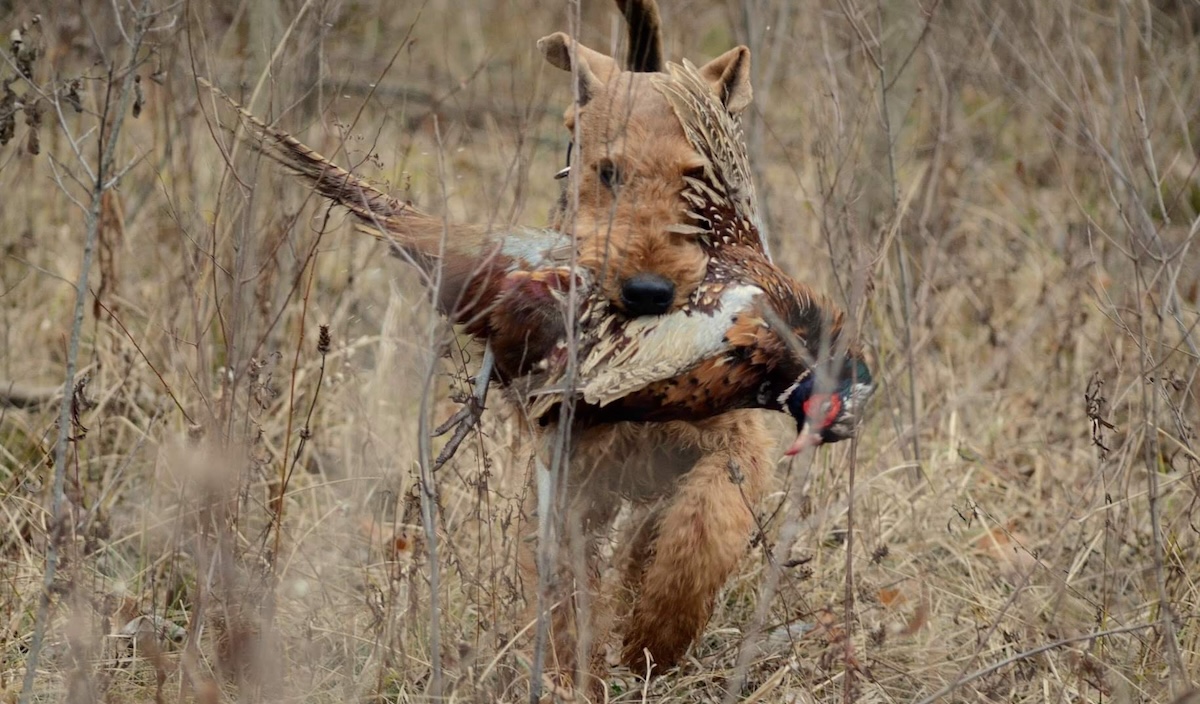“A Jack of All Trades is a master of none but oftentimes better than a master of one.” Yes, that is the other half of the famous figure of speech coined sometime in 14th-century England, which has since been redacted and plagiarized by teachers, bosses, and your Uncle Bob.
Don’t get me wrong, specialists are great. We have knives for every type of cut and a rifle just perfect for your next big game pursuit. But me? I still like a very good Swiss army knife and my .308 Winchester.
When it comes to hunting dogs, I tend to like a Jack of All Trades. If you’re like me, read on—one of these breeds might just be for you. Here are ten of the most versatile dogs in the world.
Deutsch Drahthaar
The Deutsch Drahthaar is known for exceptional tracking, retrieving, and pointing abilities across diverse terrains. Originating from Germany in the 19th century, the Drahthaar was developed to work in the field, forest, and water, drawing at the time on the best available performance genetics of the Pudelpointer, Stichelhaar, Griffon, and the Deutsch Kurzhaar.
Its wiry coat protects against harsh weather and cover, while its powerful search and tracking instinct enables efficient game location. With a high drive for recovering game, the Drahthaar is adept at tracking wounded animals, whether that is deer, waterfowl, or furred predators. This breed’s high intelligence and moldable versatility make it equally effective for waterfowl, upland game, and blood tracking. However, they are highly capable of hunting big game, such as wild boar and even bears as well. To learn more about the difference between the Drahthaar and the German Wirehaired Pointer, visit the VDD-GNA website.
West Siberian Laika
The West Siberian Laika, a spitz-type treeing dog, is highly prized for its versatility in hunting both large and small game. Originating from Siberia, this Laika was developed primitively through natural selection in remote Russian villages. It was used for moose, bear, boar, and especially marten and sable hunting, which were highly valued for their fur at that time.
Their small population is better known in the U.S. for treeing smaller game like squirrels and raccoons. They have a unique “bark treeing” style, barking only when prey is treed or cornered. This natural trait minimizes energy waste and keeps the animal engaged until the hunter arrives. For large game, the Laika tracks silently, barking only upon locating the prey and engaging in the chase.
“What I like about hunting with Laikas is that it’s virtually stress-free. I don’t have to worry about anything happening to my dogs—they stay close, check back on me during a hike, and if they chase a bear toward a road or private property, I just tone them back, and they return right to me. I’ve never lost a dog or had to leave one overnight in the woods,” said Alex Kurashev of Fight or Flight Taxidermy.
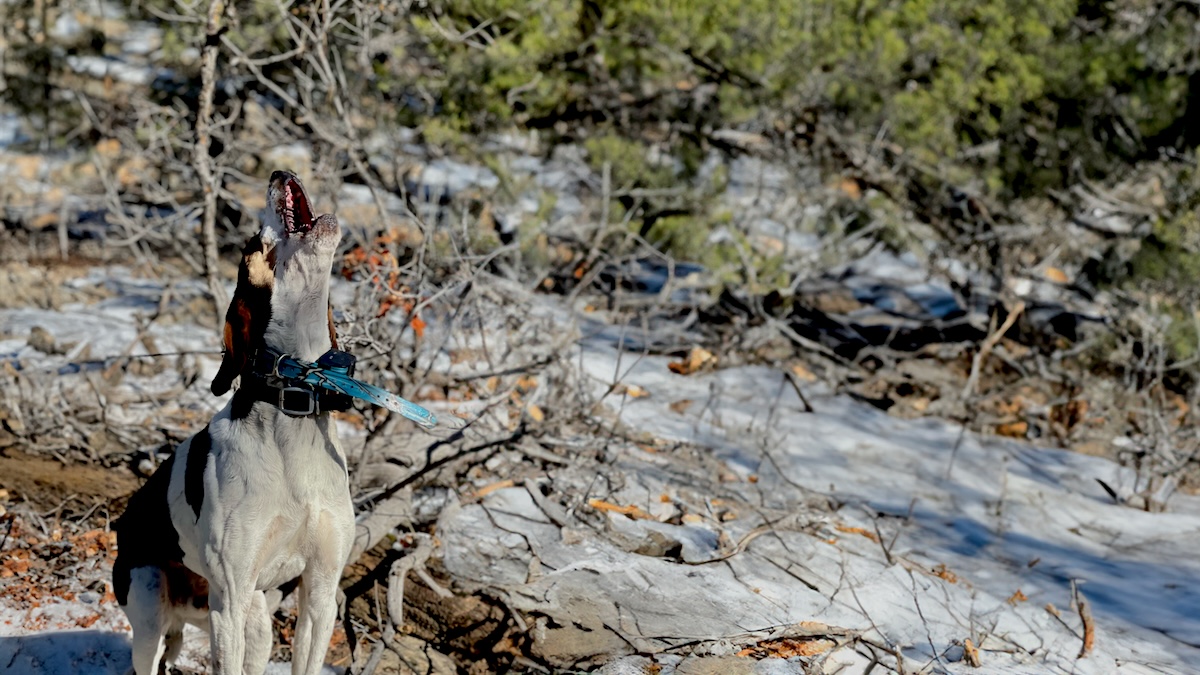
Treeing Walker Coonhound
The Treeing Walker Coonhound was developed in the United States to track and tree raccoons and other small game. Originating from an English foxhound brought to Virginia in 1742, this breed was officially recognized in 1945 and has since been prized for its ability to tree game swiftly and effectively.
Known as “hot-nosed,” these coonhounds excel in following fresh trails and alerting handlers with a loud, distinctive bay once game is treed. Though famed for raccoon hunting, they’re highly adaptable and can track various game, from hares to large predators like bears. Their athleticism, persistence, and hot nose also make them excellent field trial competitors.
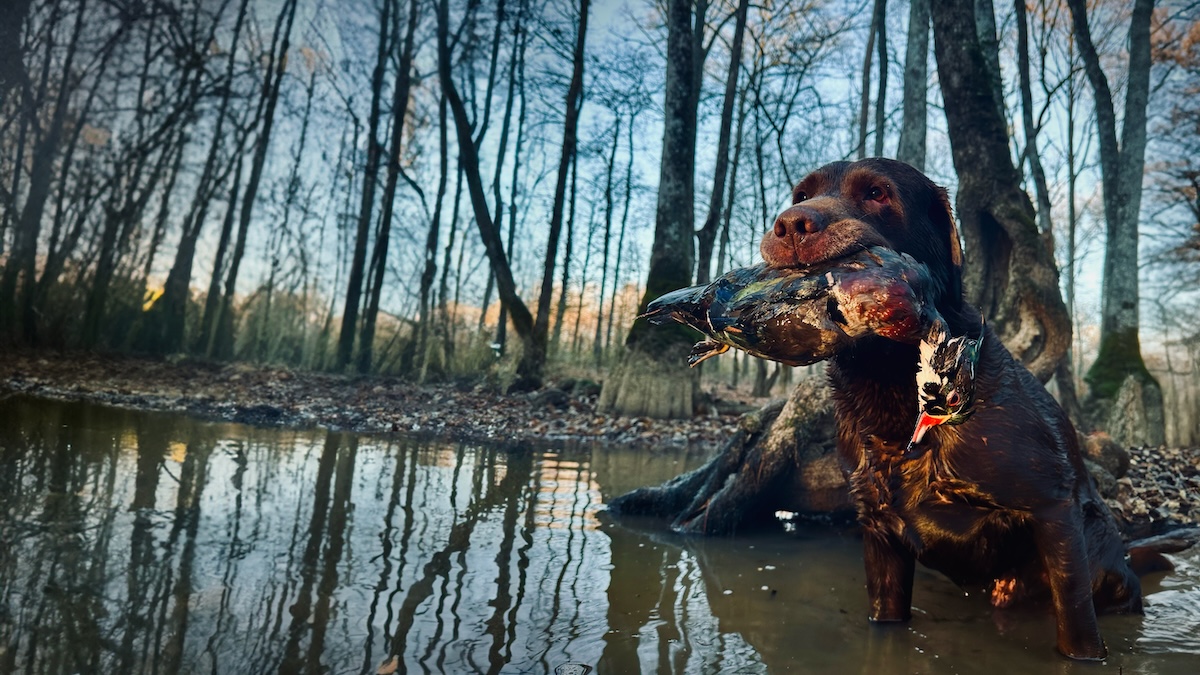
Labrador Retriever
The Labrador Retriever is arguably the most recognizable waterfowl dog on the planet. Its roots trace back to the icy shores of Newfoundland in the early 1800s, where it was originally bred to retrieve fishing nets from frigid waters and pull carts.
This breed’s dense, water-resistant coat and strong swimming abilities make it ideal for cold-water duck hunting, while its strong retrieving drive ensures consistent game recovery no matter the environment. Labradors are also one of the best upland dogs out there (they are particularly strong for running roosters) and are more than capable blood-tracking dogs.
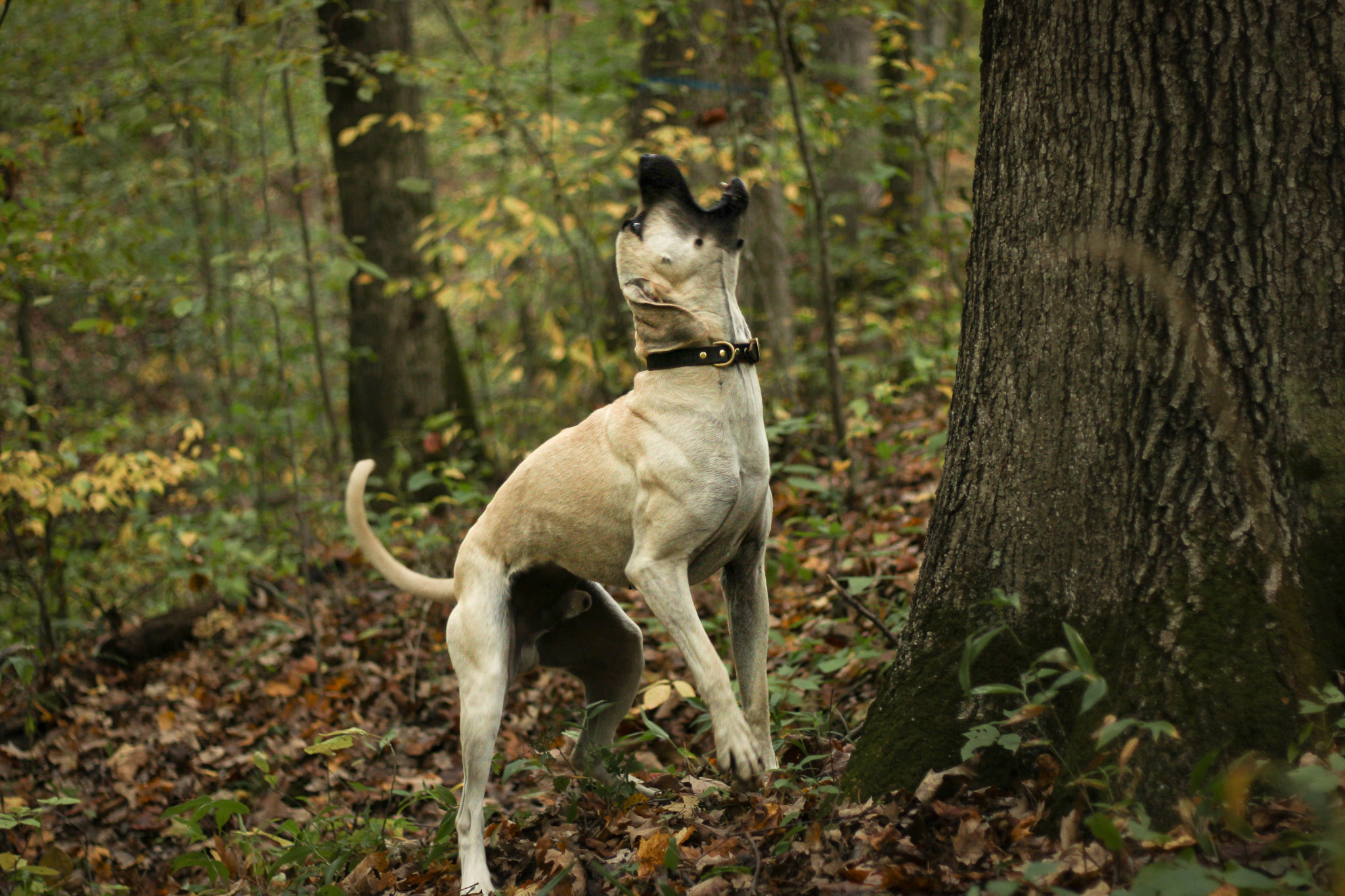
Black Mouth Cur
The Black Mouth Cur is multifunctional, with a strong reputation for tracking and treeing various game. Originating in the Southern United States, it is effective at hunting both small game, like squirrels, and larger game, such as hogs.
This breed’s highly developed scent-tracking abilities allow it to locate animals over rough and varied terrain. It is also valued as a livestock guardian and general-purpose farm dog, blending hunting and protective instincts nicely.
Deutsch Kurzhaar
The Deutsch Kurzhaar, like the Drahthaar, is known for its skill in the field, water, and forest. Developed in Germany, the breed’s speed, precision, and adaptability make it proficient in a variety of hunting tasks. Its refined sense of smell allows it to locate wounded game, whether it be deer, waterfowl, or pheasants, across various landscapes.
The Kurzhaar’s pointing and search instincts are particularly strong for upland birds, but they also possess sharpness against furred predators. To learn more about the difference between the Kurzhaar and the German Shorthaired Pointer, visit the NADKC website.
Teckel
The Teckel is a compact yet powerful hunter with a specialty in blood tracking and recovering wounded game. Unlike the typical American dachshund, Teckels from European working lines, like those at Jaeger Tracks, are bred to stringent field standards under the Deutsch Teckelklub (DTK). This breed has a reputation for fearlessness in tracking wild boar, deer, and other big game, using its low stature and long, muscular frame to stay close to scent trails within the animal’s “scent cone.”
“Jaeger, my Teckel, has tracked over a half dozen big game species across more than 10 states, from the Southeast to the Western mountains. Many of those tracks were over 20 hours old, with no visible sign. His prey drive is unmatched, and his ability to process scents and problem-solve has put a lot of meat in people’s freezers, writing a happy ending to an otherwise bad hunting story,” said Damon Bungard owner of Jaeger Tracks.
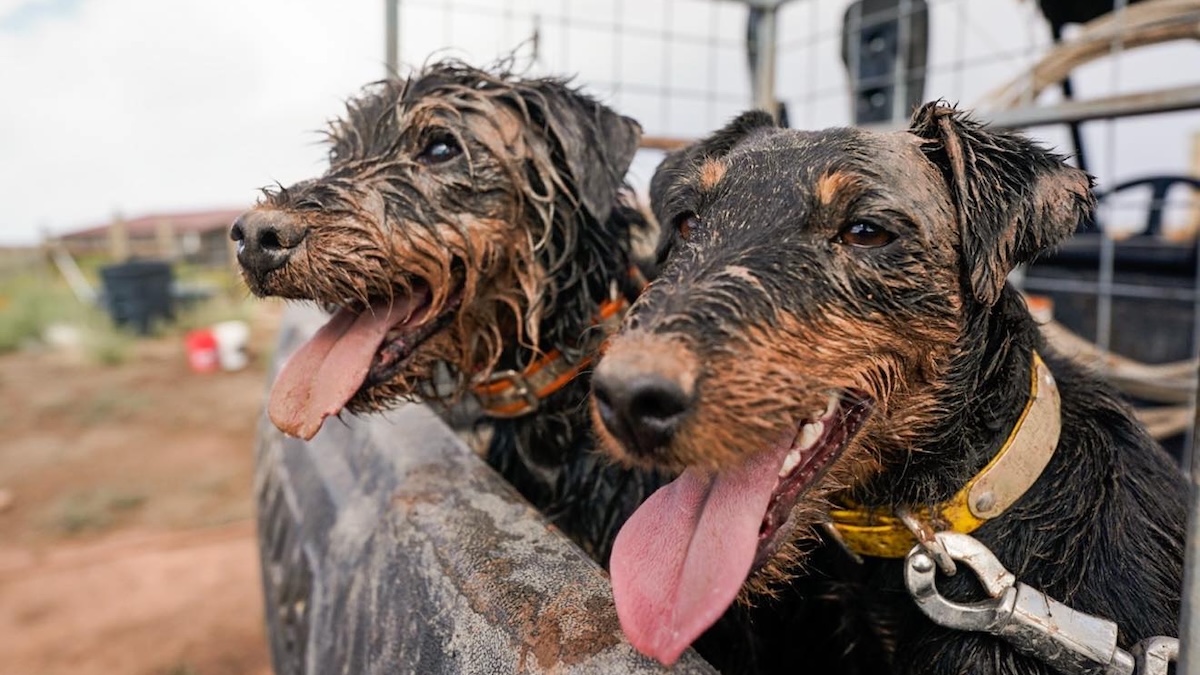
Jagdterrier
The Jagdterrier, a German hunting terrier, is famed for its courage and tenacity in hunting various game. With a compact build and hard nature, this terrier can pursue and confront animals underground, bay big game above ground, and flush birds from cover, just to name a few. Known for its acute sense of smell, the Jagdterrier is highly effective at blood-tracking wounded animals, showing versatility in different hunting environments. Its strong hunting drive and independence make it a compact versatile partner in many hunting arenas.
“Eliminating varmints, sorting livestock, and lifting the spirits of everyone they meet—that’s the job, and Jagdterriers are relentless in getting it done,” said Chad Reynolds of Reynolds Ranch.
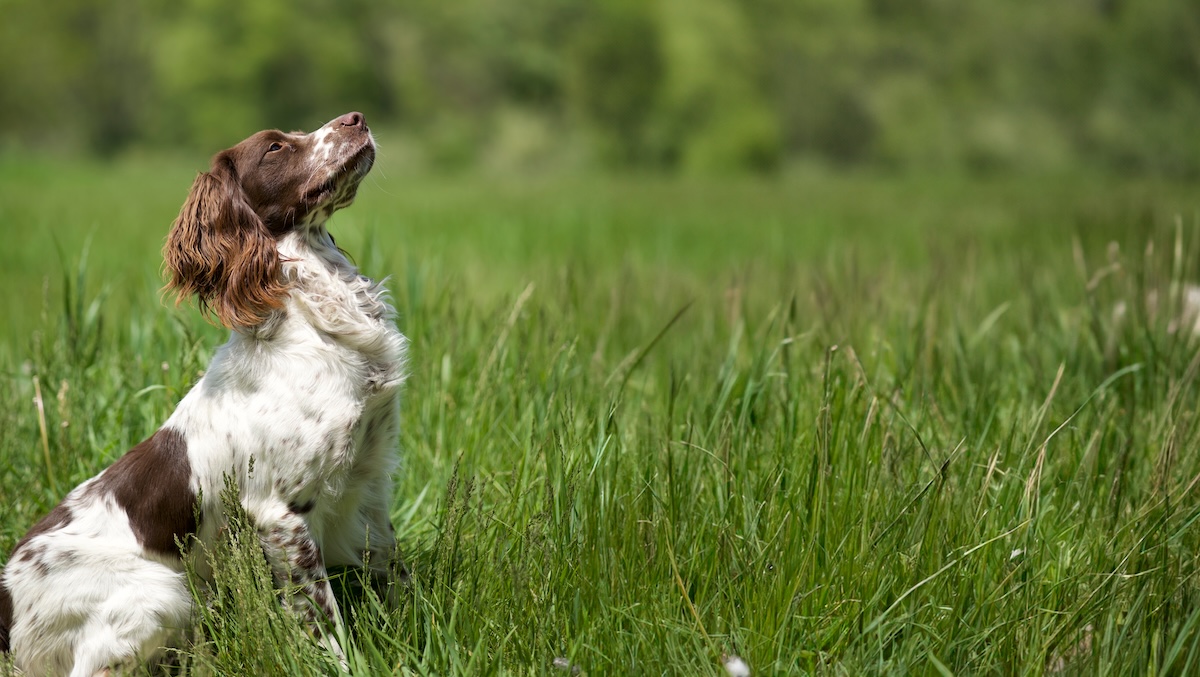
English Springer Spaniel
The English Springer Spaniel specializes in locating, flushing, and retrieving upland game birds. Trained extensively in England for pheasant and woodcock hunting, it has become a favorite for upland game hunters worldwide.
It has a sharp sense of smell and a high energy level, making it ideal for working long days through dense cover to drive birds into flight. The Springer’s agility and stamina allow it to perform extended hunts, and it readily adapts to both land and water retrieval tasks. It is an excellent waterfowl dog and is also very good at flushing rabbits and hares in front of the hunter.
Airedale Terrier
The Airedale Terrier is a versatile working and hunting terrier with strong tracking and retrieving capabilities. Originally bred in England for hunting water rats and otters, the Airedale is hard and determined, capable of pursuing both small game and larger animals like bear.
Its dense, wiry coat provides protection in rough terrain, and its natural courage allows it to dispatch predators and small varmints. The Airedale is also adaptable to search and rescue as well as guard duties, making it a valuable, multi-functional hunting companion.
Read the full article here


